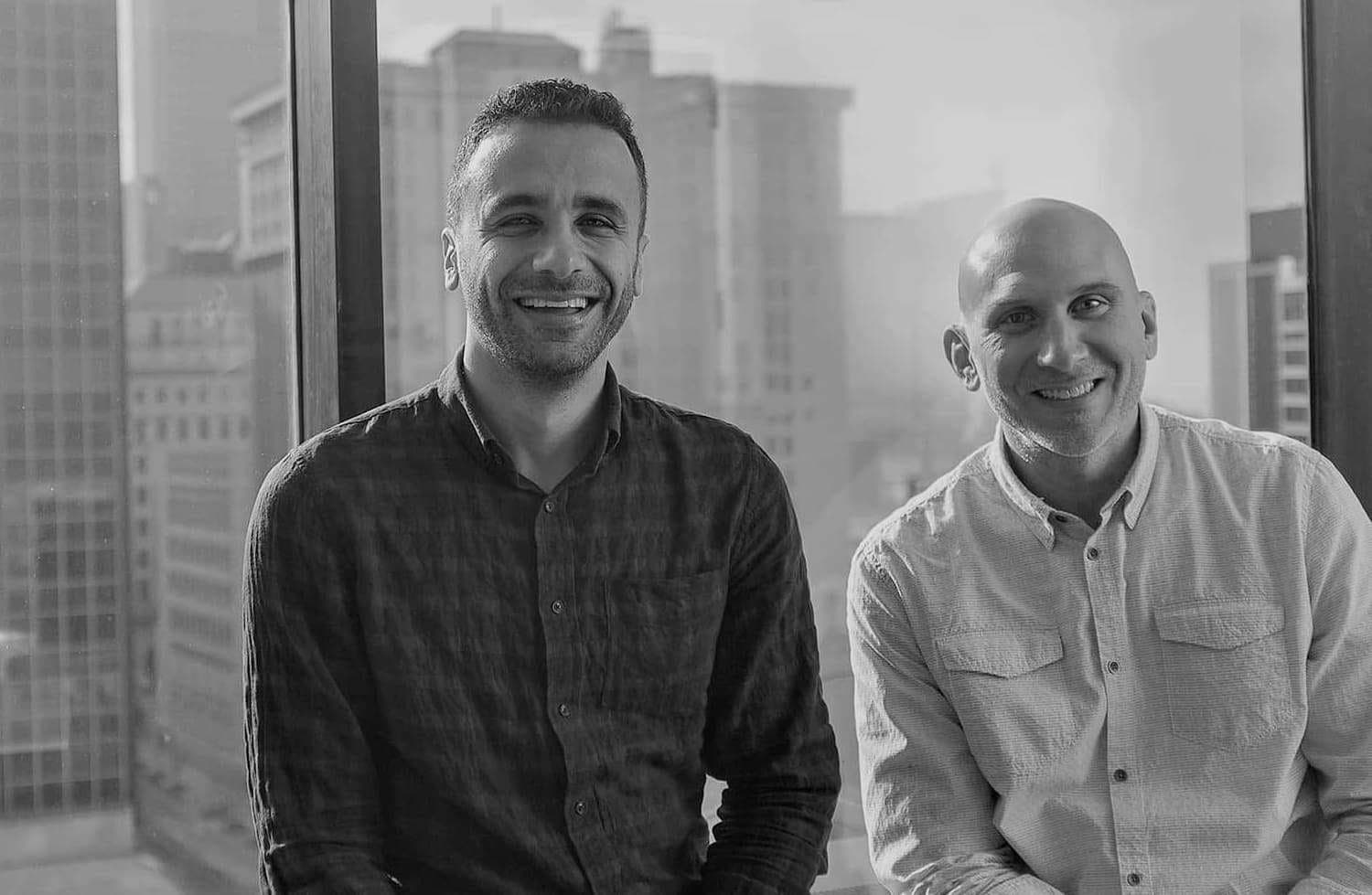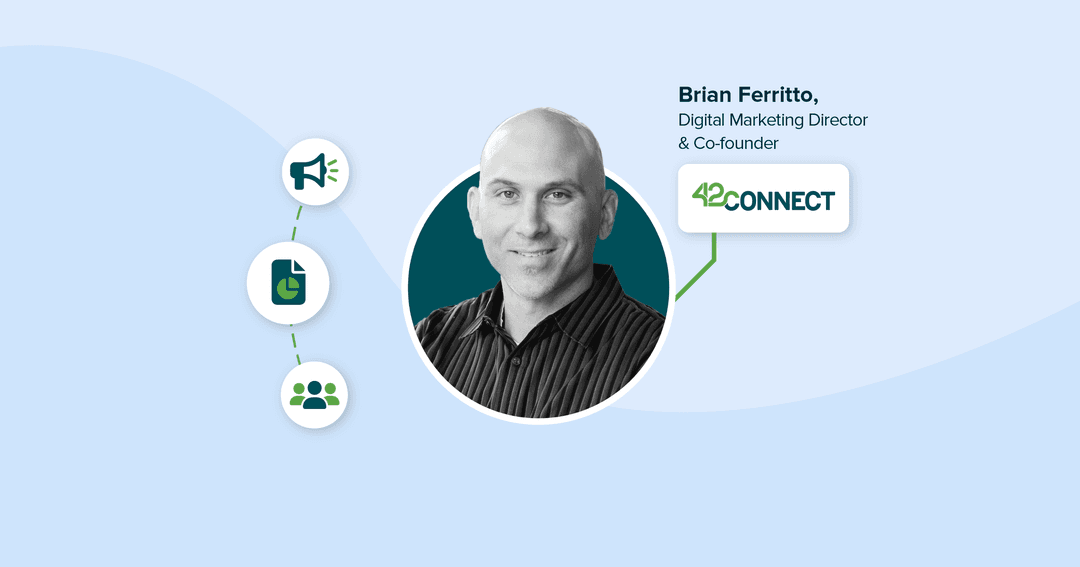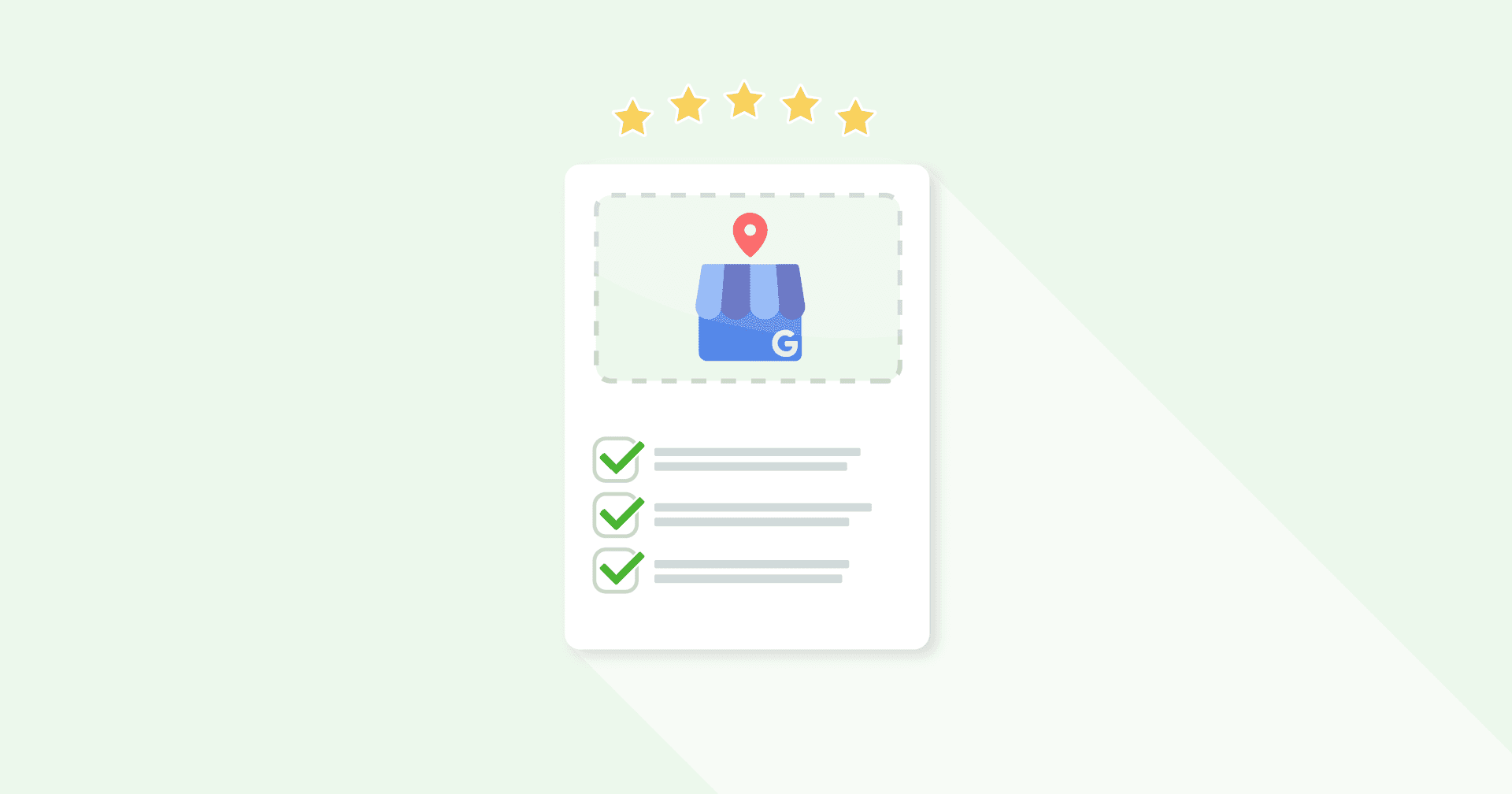Table of Contents
You’ve heard the old saying, “Slow and steady wins the race!” But what happens when you don’t–officially–decide to join the race until several years after you’ve started your marketing agency?
Ohio-based agency 42connect was created by business partners Brian Ferritto and Hany ElHibir in 2003. With only three clients and a basement office to work from, the duo didn’t initially give much thought to what the future looked like for their business.
They started small and stayed small for years before they focused on refining and growing their agency.
“It’s very cliche, but we were both working out of my basement,” Ferritto laughs.
“In the early days we just figured out how much money we needed to pay our mortgages and just kept working.” - Brian Ferritto
Ferritto and ElHibir initially focused on doing what they loved most–getting new clients and designing beautiful websites. Ferrittos background in website design and ElHibir’s background in project management helped them stay successful in their early days.
Ferritto recalled valet parking cars on the weekends to make ends meet before the two officially hit a turning point. In 2013 they decided it was time to take their business goals seriously to scale.
“We realized our business model wasn’t very sustainable long-term,” Ferritto admits. “We decided that this was what we really wanted to do. We wanted to build a company that wasn’t just the two of us anymore.”
Fast forward almost 20 years later, and they’ve grown their team to eight employees serving hundreds of businesses over the years, including a current roster of over 33 retainer-based clients.
How did they do it? A combination of focusing on what they do best to acquire clients and what they can do to retain them.
Building an Agency Growth Plan That Worked
Once they officially entered the marketing agency race, the co-founders knew that they didn’t want to rush. Although growth was the goal, Ferritto and ElHibir were certain they wanted it to be gradual.
“We wanted it to be really organic,” Ferritto shares. “We didn’t have that mentality of going from zero to one hundred employees in one year.”

Image: Hany ElHibir and Brian Ferritto, Co-founders of 42connect
Instead of focusing on a particular niche or industry, 42connect dedicated all of their attention to the services they wanted to provide.
Their plan was to keep designing websites and slowly dabble in more digital marketing services as they gained more clients. They knew they would have to figure out the growing pains along the way. But, at their core, they wanted to grow strategically by understanding what they were really good at before they started offering additional services.
When a client requested something, like PPC advertising, for example, they would hire a specialist for that contract.
“The work dictated our growth, and we never really wanted to take that risk,” Ferritto explains.
However, if growth was their goal, this approach to their agency's future meant that their business model needed to be revised.
“We weren’t able to grow our team by hiring more full-time employees because of the project-based work we were doing,” says Ferritto.
Since changing their business model, 40% of 42connect's revenue now comes from retainer work, and 60% comes from website design and development.
Current PPC Clients | Current SEO Clients | Total Websites Built |
|---|---|---|
35+ | 30+ | 100+ |
Creating a Sustainable Acquisition and Upsell Model
In order to achieve this, things changed about 10 years after they started their agency. Circa 2013, Ferritto and ElHibir made the decision to pivot from working with project-based clients to retainer-based clients.
“We used to hire based off of a need, basically,” Ferritto explains. “We would add an additional project manager, for example, if that’s what the contract called for.”
But if they wanted to keep their staff full-time, they would need to take on work that was larger than a one-time project, like a full digital marketing campaign with multiple service offerings.
Three key steps 42connect took to create a sustainable acquisition and upsell model:
1. Improving Processes
To take on more work, 42connect had to improve their internal processes–including hiring full-time employees to manage any new digital marketing services they wanted to offer.
“My business partner and I didn’t have strong business backgrounds,” says Ferritto. “But we started improving our processes as we went along and had some wins.”
They include implementing AgencyAnalytics among those wins, as it streamlined and improved their reporting processes.
"Agency Analytics is one of the most essential tools we use as an agency. It has saved us countless hours with our monthly reporting. The reports we output and email to our clients have the data clearly visualized and look professional, giving our clients a report they can finally understand!" - Brian Ferritto
2. Acquiring Retainer Work
They also knew that if they wanted recurring revenue coming in each month, they needed some kind of retainer work that they could count on every month. Luckily, starting with website design was a great doorway into upselling opportunities.
“It’s funny because some of our early clients who approached us about websites are still our clients almost ten years later,” Ferritto recalls. “And it’s because we showed them how our additional services could also help their business.”
3. Upselling Opportunities That Enhance Current Deliverables
As they built their relationships with existing and new clients and had success with sustainable projects, they began creating case studies that highlighted their agency’s success–a strategy that their team uses to this day.

“If we can prove that the strategies we did for one of our clients will work for another, then that’s a very valuable tool for winning new clients.” - Brian Ferritto
One client in particular that they saw success with was a gear manufacturing company called Gear Tec. They approached 42connect with a request to redesign their website, skeptical of needing an entire digital marketing strategy. But because they wanted to promote a new service (gearbox repairs), it was an opportunity for 42connect to show what they’re capable of.
“We built them a landing page, a PPC campaign, and some SEO services, and within a twelve-month period, they’ve had over a million dollars in new business opportunities that came in through their website,” Ferritto says.
After diving deep into the client’s business and thinking about the mindset of their customer base, they successfully got this client to the top of the SERPs for one of their main keywords. And they continue to build new landing pages and run advertising campaigns for different industries the client wants to break into.
“It was all about showing them the quality of leads coming in,” Ferritto shares. “It was pretty obvious for them that they couldn’t hire a salesperson to generate the number of leads for what they were investing in our services.”
After all, it’s a strategy worth trying–lead with what your agency is best known for and then focus on additional upselling opportunities that enhance your current deliverables.
Using Data to Showcase Agency Value
Aside from using case studies to showcase the results 42connect brings their clients’ businesses, they rely heavily on marketing data.
“That’s the great thing about digital advertising,” Ferritto smiles. “You always have the numbers to back up what you’re doing. You can’t hide anything.”
But it’s one thing to have the data available and another to have your clients take an interest in it.
“We try to communicate with our clients in a way so that working with us is like a partnership,” explains Ferritto. “We educate them on the importance of them following through on their end. It’s a matter of telling them, ‘we want you to see the value and ultimately your ROI.’”
The 42connect team has client discovery meetings where they discuss client expectations upfront to ensure everyone is on the same page.
“It’s about keeping transparency with the client. We want them to be aware of what the timeframes are and what they can realistically expect from us.” - Brian Ferritto
And once the team delivers on what they promised, it’s up to the data to help them nurture long-term client relationships. However, because 42connect’s clients are busy, they often don’t have time to go through an 8-page report.
“It’s always our goal to have a page that summarizes enough information of what we did for the client,” Ferritto explains. “Putting the data in a visual format that the client can absorb is super important!”
Building client reports and marketing dashboards has helped 42connect communicate their work concisely and visually, keeping their clients happy and informed. They’ve also created dashboards that keep their internal team keep track of KPIs and discover any improvements that could be made.
“It’s so helpful to get that overview look to see if we need to make any changes on a daily basis,” says Ferritto.
When a Client Campaign Doesn’t Perform
Even with hundreds of data points available at their fingertips, sometimes a campaign will just underperform–a common frustration that all agencies can relate to.
“Sometimes it just doesn’t work, whether it’s an industry thing, going after the wrong audience, there could be a million reasons why a campaign flops,” says Ferritto. “But it’s how you adapt and handle the situation that makes the difference.”
Over the years, the 42connect team has developed a digital marketing toolbox–something they use in the event of a campaign not performing how they’d expected to build new strategies.
“There will always be hiccups along the way, but they challenge us not only from a creative standpoint but also strategically,” says Ferritto. “And that’s where we thrive.”
When an ad campaign isn’t performing well, they go back to the drawing board and consider some of these solutions:
What kind of retargeting can be done?
Can third-party audiences be used?
Where is the audience? Where do they live? How can they be reached?
Is there flexibility in the budget?
“It comes from years of experience and figuring out what works and what doesn't,” explains Ferritto.
“Every client can be different, but we communicate what we’re doing and how we’re being proactive for them.” - Brian Ferritto
It’s crucial for agencies to show their value by being proactive in these situations. You don’t want to wait for the client to reach out first and wonder what’s happening with their campaign. Having a centralized reporting platform helps 42connect keep their fingers squarely on the pulse of their client’s performance at all times, should an occurrence arise.
Knowing When to Outsource
Growing the team came with challenges that many business owners can relate to–how many full-time staff to take on at a time and when to rely on outsourcing. 42connect was no exception. Their earlier project-based business model added additional complexity because they could only hire resources based on the work they knew was coming in.
“Early on when we were still figuring out our workloads, we experimented with what could be outsourced and what could be done in-house,” says Ferritto. “But ultimately, there's only so much time in a day!”
They were constantly going back and forth, trying to communicate how they wanted their client’s projects to look, discussing revisions, and more, and they realized outsourcing was no longer a feasible option. It was costing them more time than the value they were hoping to get.
“For us, outsourcing just wasn’t working,” Ferritto shares. “They’re often the most time-intensive solutions from a project management standpoint.
So, they refocused on creating a hybrid model of in-office and fully-remote employees in order to fulfill certain talent requirements.
“Because we work in a digital industry, we’re lucky to have a world of talent to choose from,” Ferritto says. “A big challenge for us is finding local talent in Cleveland who don’t already have jobs in the industry.”
To solve this challenge, they have hired three completely remote employees: two of which are international, and one that is in the US.
“We realized in today's world, not all of our employees need to be local or in our office. The current day workforce has no boundaries, and realizing this has allowed us to acquire the best talent possible.” - Brian Ferritto
Ferritto says the COVID-19 pandemic opened a lot of people’s eyes to a non-traditional work schedule, including theirs.
“I don’t think it’s a new concept, it’s just a matter of trying it and realizing if your team is capable of making it work,” he says. “And for us, it’s worked amazingly from an employee retention standpoint because they have flexibility and trust.”
Being Open to New Growth Opportunities
As for the future, Ferritto says they’re exploring various growth opportunities, including growing through acquisitions.
“We’re at a point where we have a really good team with good processes in place, and we want to take that next step to accelerate our growth even further,” Ferritto smiles.
Ferritto has two pieces of advice to offer other agency owners hoping to scale their business:
Be clear about what services you want to provide
Then build your case as to why the client should work with your agency by using case studies and marketing reports
“You may lose money in the beginning trying to state your case, but in order to get a win, you need to build a story, package it up, and sell it. That’s how you’ll be successful in the long run.” - Brian Ferritto
For 42connect, it’s all about letting your work and your successes speak for themselves. They lean into delivering websites and high-performing campaigns that can then be showcased as proof of what they can do for the next client and the next one after that.
In order to achieve this, Ferritto recommends:
Only take on clients when you know you can deliver results
Focus on what you do best
Learn when to say no to clients that don’t fit your ICP
Show clients their progress over time and display their metrics visually
Whether you’re a smaller agency that’s ready to start scaling, or a larger agency trying to build growth processes, some lessons can be learned from this nearly 20-year-old agency that took their time to get it right.

Written by
Richelle Peace is a writer with a degree in Journalism who focuses on web content, blog posts, and social media. She enjoys learning about different topics and sharing that knowledge with others. When she isn’t writing, Richelle spends time teaching yoga, where she combines mindfulness, movement, and her passion for wellness.
Read more posts by Richelle PeaceSee how 7,000+ marketing agencies help clients win
Free 14-day trial. No credit card required.






